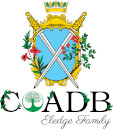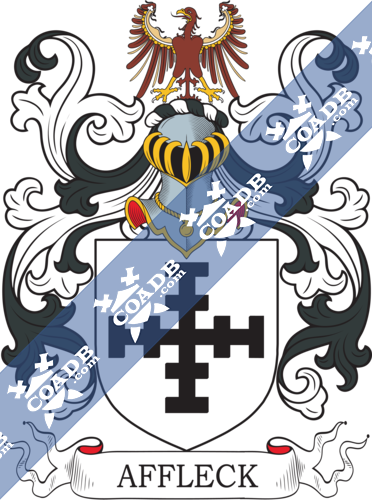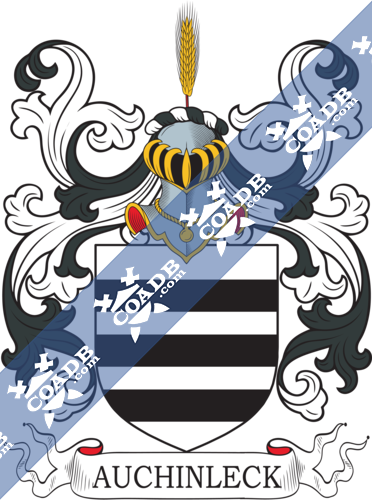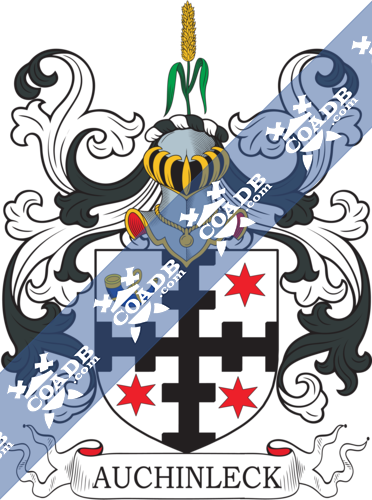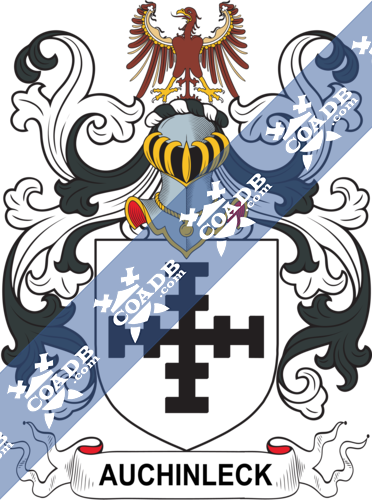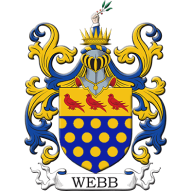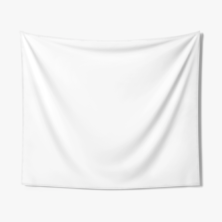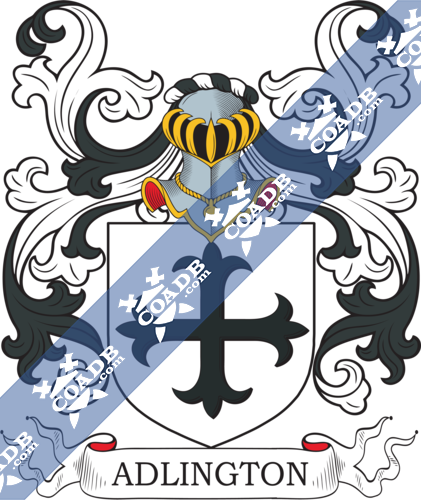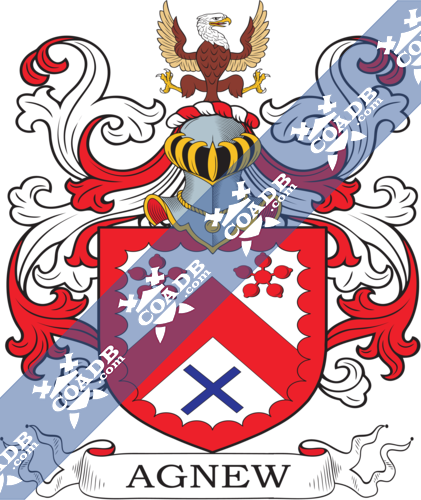Affleck Family Crest, Coat of Arms and Name History
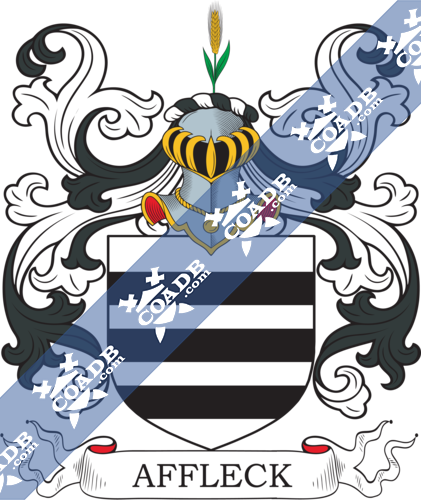
Affleck Coat of Arms Gallery
Don’t know which Coat of Arms is yours?
We can do a genealogical research. Find out the exact history of your family!
Learn MoreThis section has not yet been completed. If you are interested in having your genealogy done, we offer an affordable research servicethat traces your lineage so you can learn more about your ancestors, where they came from, and who you are.
Blazons & Genealogy Notes
1) (Dalham Hall. co. Suffolk, Bart.). Motto—Pretiosum quod utile. Ar. three bars sa. Crest—An ear of wheat bearded ppr.
2) (Glenbervie, Kincardineshire). (Balmanno, co. Perth). Said to be the arms of Balmanno, which the first Auchiuleck of this family took on his marriage with the heiress of Balmanno of that Ilk. Ar. a cross embattled sa. Crest—An eagle rising ppr.
3) (that Ilk, co. Angus). Motto—Pretiosum quod utile. Ar. three bars sa. Crest—An ear of rye ppr.
4) (Crevenagh House, co. Tyrone, and Shamrock Green, co. Fermanagh). Motto—Pretiosum quod utile est. Ar. a cross counter embattled sa. in the 1st quarter a bugle horn az. stringed and embellished or, and in the 2nd, 3rd, and 4th quarters an estoile gu. Crest—A wheat stalk bladed and eared all ppr.
5) (Glenbervie, Kincardineshire). (Balmanno, co. Perth). Said to be the arms of Balmanno, which the first Auchiuleck of this family took on his marriage with the heiress of Balmanno of that Ilk. Ar. a cross embattled sa. Crest—An eagle rising ppr.
